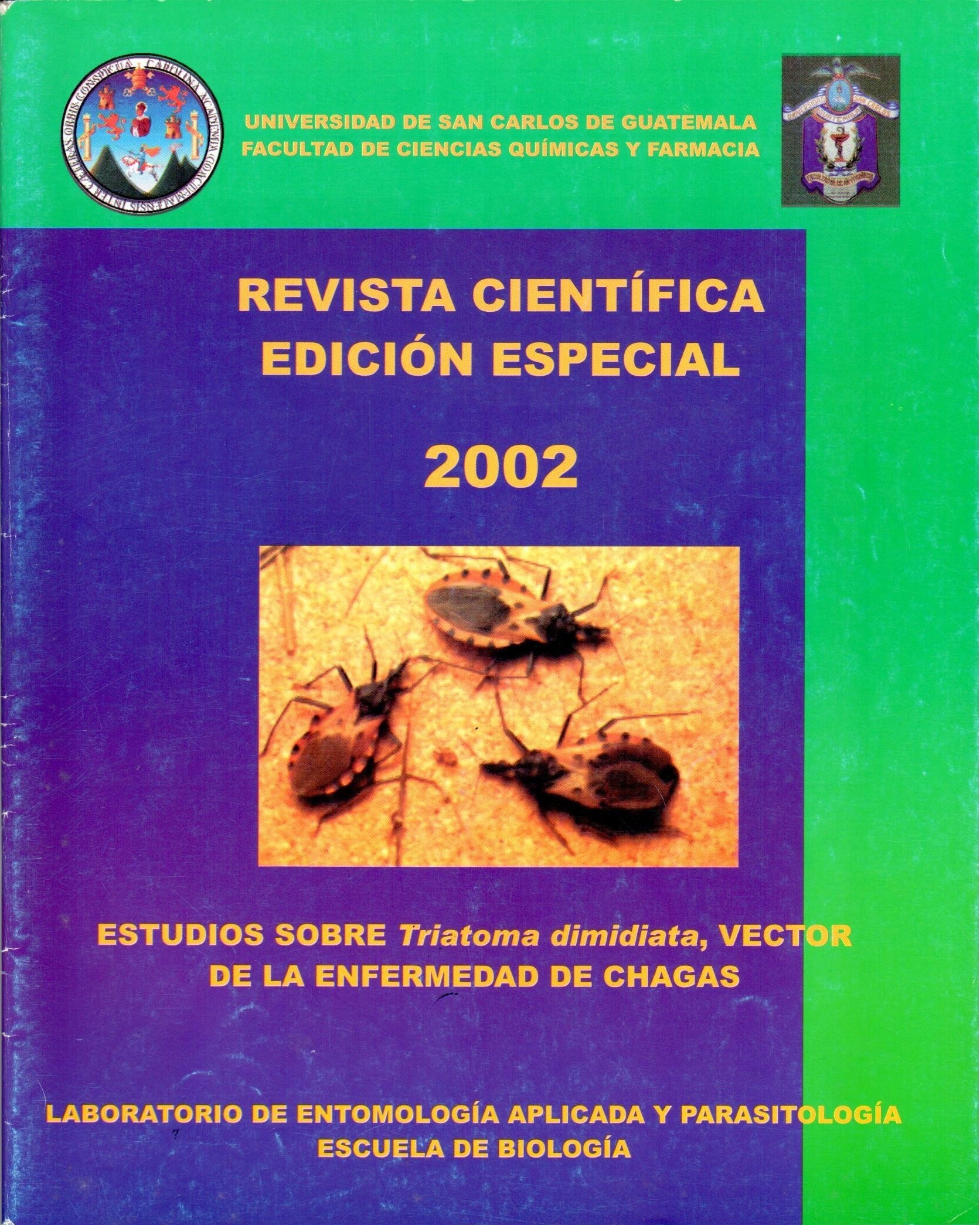Comparison Of Gene Frequencies In Two Generations Of Triatoma Dimidiata, Using RAPDS- PCR Molecular Genetic Techniques
DOI:
https://doi.org/10.54495/Rev.Cientifica.EdicionEspecial2002.246Keywords:
Gene frequencies, Triatoma Dimidiata, RAPDS-PCR, Molecular Genetic TechniquesAbstract
Molecular biology has been applied to the study of population genetics and these techniques have recently been focused on triatomine research. In this investigation, the Random Amplification of Polymorphic DNA (RAPD's) technique was applied to deepen the knowledge of the reproductive and migratory patterns of Triatoma dimidiata due to the fact that the reinfestation of T. dimidiata has been detected in sprayed houses. Since T. dimidiata is the main vector of Chagas disease, it was proposed to better understand its reproductive and migratory patterns, since this could contribute to improving strategies for the control of this vector. Two types of samples were mainly selected: control individuals, resulting from the cross between two known virgin parents and field samples in which the male parents were unknown. The field individuals were collected in the municipalities of Ixhuatán and Pueblo Nuevo Viñas of the Department of Santa Rosa. Understanding the genetic process related to the copulation and fertilization of these triatomines allowed us to better focus the alternatives against the reinfestation of the sprayed houses. The results obtained suggest that the females of T. dimidiata copulate with several males. This was visually appreciated when plotting with dendrograms the data of the cluster analyzes carried out between the control individuals and the field individuals. It is possible that it is the males of Triatoma dimidiata that determine the population movements of this species. since they are induced to copulate with several females and that they have a greater ability to fly. This is the first work that documents polyandry in Triatoma dimidiata and raises the preponderant role of the male of this species in population movements. It is recommended to expand this type of study basing the analysis on a greater number of evaluated loci and to use alternative techniques to running the samples in agarose gels, which allow a better resolution of the banding pattern.
Downloads
References
Monroy C. MejíaM,. Rodas A. 1995. Ecología intradomiciliar de Rhodnius prolixus, Tdatoma dimidiatay Tdatoma nítida. Infirme anual ( Gjet-72) del proyecto de cooperación Guatemala-Japón para la Investigación de Enfermedades Tropicales, JICA, Guatemala.
García Beatriz A, Osares Barata JUL. Blanco A. 1995 Enzime polymorphism among Tdatoma infestan (Hemíptero: Reduviidae) colonies. Journal of Medical Entomology 32 (2): 126-133, https://doi.org/10.1093/jmedent/32.2.126 DOI: https://doi.org/10.1093/jmedent/32.2.126
García B.A., Canali D.M y Blanco A. 1995. Genetic Structure of four species of Tdatoma ( Hemiptera: Reduviidae from Argentina. J. of Med. Entomoi 32 (2): 134-137, https://doi.org/10.1093/jmedent/32.2.134 DOI: https://doi.org/10.1093/jmedent/32.2.134
Lynch M. 1988. Estimationofrelatedness by DNA fingerprint. Mol. Biol. Evol. 5 : 584-599.
Apostol B.L. Black IV W.C. Miller B.R. Reiter P and Beaty B.J. 1993. Estimation ofthe number of full sibling families atan oviposition site usina RAPDS-PCR marker: applications to the mosquito Aedes aegypti. Theo Appl Genet. 86: 991-1000, https://doi.org/10.1007/BF00211052 DOI: https://doi.org/10.1007/BF00211052
Apóstol Barbara, Black IV Willian, Reiter Paul and Miller Barry. 1994. Use of randomly amplified polymorphic DNA amplified by polymerase chain reaction markers to estimate the number of Aedes aegypti families at ovipositon sites in San Juan Puerto Rico Am: J. Trop Med. Hyg. 51(1): 89-97, https://doi.org/10.4269/ajtmh.1994.51.89 DOI: https://doi.org/10.4269/ajtmh.1994.51.89
Tabaru Y , Monroy C, Rodas A, Mejia M, Rosales R. 1999. Geografical distribution of vectors of Chagas Disease and populations at risk of inf ection in Guatemala. Md. Entomol. Zool. 50(1 ): 9-17, https://doi.org/10.7601/mez.50.9_1 DOI: https://doi.org/10.7601/mez.50.9_1
Black W.C. 1V.1993. PCR with arbitrary primer: approach with care. Insect Molecular Biology 2(1): 1-6, https://doi.org/10.1111/j.1365-2583.1993.tb00118.x DOI: https://doi.org/10.1111/j.1365-2583.1993.tb00118.x
Elseth G., Baumgardner K., 1995 Princi pies of Modern Genetics, West Publishing Company, USA
Tabachnich WJ and Black IV W.C. 1995. Making a case for molecular population genetic studies of Arthropod vectors. l995. Parasitology Today. 11 (l):27-29, https://doi.org/10.1016/0169-4758(95)80105-7 DOI: https://doi.org/10.1016/0169-4758(95)80105-7
Williams J.K, Kubelik A.R. LivaK K.J. Rafalski J.A. Tingey S.V 1991. DN polymorphisms amplified by arbitrary primer are useful as genetic marker. Nucleic Acids. Res. 1 8 : 6531-6535, https://doi.org/10.1093/nar/18.22.6531 DOI: https://doi.org/10.1093/nar/18.22.6531
Downloads
Published
How to Cite
Issue
Section
License
Copyright (c) 2002 Maria Carlota Monroy, Juan José Chávez, Sergio Melgar, Antonieta Rodas, Silvia Bor, Regina Rosales, Eunice Enriquez, Patricia Dorn

This work is licensed under a Creative Commons Attribution 4.0 International License.
Authors who publish with this journal agree to the following terms:
- Authors retain copyright and grant the journal right of first publication with the work simultaneously licensed under a Creative Commons Attribution License 4.0 that allows others to share the work with an acknowledgement of the work's authorship and initial publication in this journal.
- Authors are able to enter into separate, additional contractual arrangements for the non-exclusive distribution of the journal's published version of the work (e.g., post it to an institutional repository or publish it in a book), with an acknowledgement of its initial publication in this journal.
- Authors are permitted and encouraged to post their work online (e.g., in institutional repositories or on their website) prior to and during the submission process, as it can lead to productive exchanges, as well as earlier and greater citation of published work.









